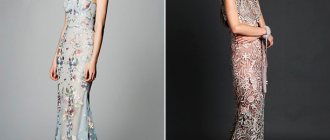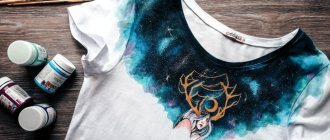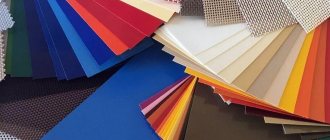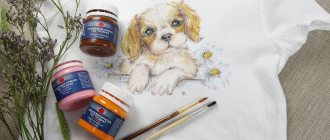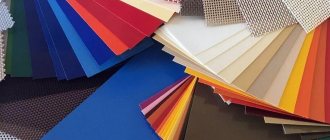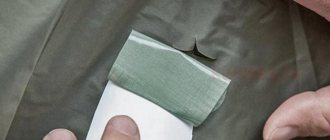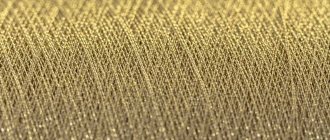The technology for gluing fear onto different bases depends on the type of crystals itself. There are ordinary rhinestones that need to be coated with glue before applying to the surface. There are also hot-melt adhesive elements that already have an adhesive layer on the back side, but the technology for attaching them requires heating. Everything about choosing the best glue and the nuances of working with different types of crystals is below.
Types of rhinestones
According to the type of material, rhinestones are:
- Acrylic. Lightweight, inexpensive plastic decor. They shine poorly and quickly become cloudy after washing and wearing for a long time.
- Metal. Resistant to wear, no shiny shine.
- Glass. The better the quality of the material, the brighter and more brilliant the rhinestones. They don't fade for a long time. They contain lead oxide, so their price is quite high.
Depending on the method of attachment to fabric, rhinestones are:
- Cold fix rhinestones. The user himself applies the adhesive mixture to decor or clothing. For high-quality fixation, it is important to choose the right glue and work with it carefully.
- Hot fix adhesive. These are self-adhesive or hot-melt rhinestones. They need to be applied to the clothing in the desired place and heated, then the adhesive layer will soften, and after hardening it will fix the decoration in the chosen position. Thermal rhinestones are heated with an iron or thermal applicator. In hot-melt rhinestones, the product is applied to the bottom by the manufacturer.
- Sew-on. They have holes for sewing to the material. The process of fixing to the material is more labor-intensive, but there is always the possibility of altering them to another place. Such crystals are used on thin and fleecy materials, where fastening with glue will not be strong.
Tips for a needlewoman
In the old days they told me to learn to embroider on matting, and then on scoured cloth. A similar recommendation is addressed to novice decorators with rhinestones: by practicing on not the best items in your wardrobe, you can understand the principle of working with decoration and find out which company supplies the best material.
Be sure to take into account the presence of other accessories on clothing : zippers and buttons may interfere with the uniform treatment of the surface with rhinestones by the iron.
Advice! Places with small surfaces that are difficult to reach with an iron can be decorated with a soldering iron, gluing each part separately. Don't know how or are afraid to work with a soldering iron? You can use a candle and tweezers: after heating each rhinestone on the fire, quickly and carefully glue it. The method is also good for fabrics that do not like high temperatures.
Having mastered pasting clothes with thermal rhinestones, you can try decorating shoes - for example, masking scuff marks on your favorite but slightly worn boots. For this:
- A drawing is applied with a gel pen;
- Before gluing the decor, the trace of the handle is carefully wiped off with a cotton swab and alcohol or acetone. Acetone spread over the surface of the skin is fraught with indelible stains !
- Using a soldering iron or a candle, each element of the pattern is glued.
Will the skin suffer from such manipulations? No - a fairly coarse material can survive heating of about 180 degrees. Only the varnished surface raises doubts.
DIY beads from scrap materials
How to make a belt with your own hands from fabric?
Choosing glue for rhinestones
To glue rhinestones to all types of substrates, except glass, universal adhesives based on epoxy resin are used.
They can leave marks and take too long to dry. Better adhesion is ensured by special adhesives, which are produced in sealed containers with a pointed spout. They quickly harden and form an invisible, transparent seam.
When purchasing glue for rhinestones, you need to make sure that its components do not include acetone and ethanoic acid. These components can damage the product. If it will be periodically washed, you need to choose a moisture-resistant adhesive mixture. It is important that after drying the adhesive joint becomes colorless. The product must be packaged in convenient packaging that is free of signs of damage, leaked glue, dirt or dust. The glue must have a normal shelf life.
Moment-Crystal
Has a pungent odor. If used for a long time without protective equipment, your health may worsen. The transparent mixture is easy to apply. Has a slightly viscous consistency. Dries quickly, forming a film on the surface. If used carelessly or if too large a drop of glue is applied, the resulting film may tear, thereby staining adjacent areas that cannot be treated.
Instant adhesion to the surface. It will be impossible to adjust the position of the crystal.
Fevicryl Fabric Glue (India)
Indian glue is packaged in bottles with a dispenser spout. The base is epoxy paste. It does not emit a smell, does not stretch, and is easy to apply. Initially the composition is white, but after hardening it becomes transparent.
The mixture sets quickly, but the position of the glued decor can be adjusted a couple of seconds after application. The created connection does not lose its plasticity after hardening and does not lead to deformation of the material. They are convenient for pasting over vertical bases.
It dries completely within a day. Treatment with a household hairdryer will help speed up drying. After gluing, the item can be washed in cool water no earlier than after 7 days.
Textile adhesive E6000 CRAFT (USA)
The viscous, odorless adhesive composition tends to form threads between the drops. The product has good adhesive properties, forms a strong, elastic seam, and is easily wiped off from surfaces that cannot be bonded. It does not affect foil surfaces, so it is often used for gluing Swarovski stones. The created compound is resistant to fresh and sea water, and is used to fix crystals on swimsuits.
Covered bases can be machine washed.
Danscouture glue (USA)
Non-toxic water-based emulsion. After hardening, it forms a transparent seam that does not deform the material. Suitable for textile materials. Not recommended for use on leather surfaces. Used for gluing crystals to leotards for rhythmic gymnastics and figure skating, and to dancers' costumes. Decor with a flat base is attached to Danscouture.
Epoxy adhesive Swarovski CG 500-35 (USA)
A popular product among jewelers. In everyday life it is used to decorate gadget cases, accessories, furniture, etc.
The mixture adheres well to metal, synthetic materials, rubber, porcelain, wood, and you can even glue stones to glass. It is not applied to fabrics as it leaves marks.
Uhu Power
A universal product with a pungent odor, but it glues crystals reliably. The substance is transparent, has a liquid consistency, and dries quickly. Rhinestones are glued to textiles and leather. The formed compound can withstand high and low temperatures and is resistant to moisture. Products of this brand are used in nail design.
Crystal Hobby
Product without strong odor. The bottle is equipped with a convenient spout. After drying, it securely attaches the rhinestones to the fabric.
Liquid thread
Waterproof composition for gluing crystals. Used when combining materials and for decorating clothes.
Method two - hot melt
Thermal rhinestones attach best to medium-weight fabrics - cotton, linen, wool. The glue easily penetrates the fibers and binds them to the back of the jewelry.
To fix thermal rhinestones you will need the following tools:
- Soldering iron or hot-melt applicator
It is convenient due to its compactness: you can simply hold the product in your hands during operation. It has a set of attachments that allows you to work with rhinestones of different sizes. Thanks to them, the soldering iron glues the crystal locally, exclusively at the point of contact of the fabric with the stone. Therefore, it is ideal for working in hard-to-reach areas of clothing or shoes.
- Iron. An ordinary household appliance or a small iron for needlework.
There are also several gluing technologies:
1. The stone is placed on the fabric with the thermal base down and the soldering iron is pressed against it. This option is convenient when you decide to first lay out the design with pebbles, and then attach them with a thermal applicator.
2. The rhinestones are laid out with the backing up on the table, heated with a soldering iron and the rhinestone is transferred to the product. It is important to experimentally select the time for gluing. You should start with 4-7 seconds.
3.To glue rhinestones onto fabric with an iron, cover the pattern with a sheet of paper, select the “cotton” temperature setting (160 – 180C) and slowly iron for 20-30 seconds. You need to apply a little pressure on the iron to increase the adhesion of the pattern to the surface of the clothing.
Using any technique or method, allow the glue to dry for 24 hours without moving the item from the surface on which you glued the crystals.
How to glue rhinestones to fabric
- Applying glue. The adhesive drop is squeezed onto the fabric so as to completely penetrate its surface. To do this, after application you need to wait a couple of seconds. For dense materials, the drop should be slightly larger than for thin ones. Its diameter should be slightly larger than the size of the rhinestone. If the pattern is large or the stones are too small, then the mixture is applied to the material, but when the stones are large and spot application is needed, the adhesive mixture drips onto the rhinestone itself.
- Preparation of material. Any elastic materials must be stretched before attaching rhinestones. If you plan to stick rhinestones on clothing, you need to put thick cardboard between its layers to prevent the substance from getting on the bottom of the item.
- Decoration. Rhinestones should be taken not with your hands, but with tweezers, mini-tongs, or a wax or plastic stick with a drop of wax at the tip. Pry off the rhinestone with a toothpick, place it in the center of the glue drop with tweezers and lightly press it into it.
Before decorating clothes, it is better to practice on an unnecessary piece of fabric. If the rhinestones are placed incorrectly, it will be difficult to correct the situation. The glue will leave traces, and the clothes will lose their attractiveness.
It is not recommended to stick elements on thin fabrics such as organza, as well as on leather, including artificial leather. Crystals do not hold well on such materials and will soon fall off.
Using the applicator
There are fabrics that cannot stand the touch of an iron. For example, velvet. This is where a convenient soldering iron applicator with various attachments will come to the rescue. The attachments vary depending on the size of the rhinestone and allow you to heat the jewelry precisely and evenly.
The device itself is small and easy to use. The applicator will be indispensable for gluing individual hot-melt adhesive rhinestones. The device must be held still to accurately place the crystal on the fabric and ensure excellent results.
There are vacuum models of applicators that are equipped with a special pump; it draws in and holds the rhinestones.
Adhering to film-adhesive tape
A convenient method of application for large patterns of stones that are difficult to carry one piece at a time. The gluing process goes like this:
- The stones are placed on adhesive tape with the adhesive base facing up.
- The film is turned over onto clothing and ironed.
- The film is removed.
When attaching crystals in a large group at the same time, you must remember that not all rhinestones can grip equally well and some of them will fall off over time.
How to glue thermal rhinestones
To reliably glue thermal rhinestones to clothes, you need to check the quality of adhesion of the glue to the surface material. You also need to make sure that the surface will not suffer from exposure to high temperatures. Clothes must be clean, free from stains and wrinkles.
If a complex pattern or rhinestone applique is created, first a diagram is drawn on the material, indicating the attachment points. The markings are placed carefully so that after gluing they are not visible.
Iron gluing
- The rhinestone is placed on the fabric with the adhesive side down in accordance with the selected pattern or design. It is important that the dress, top or any other clothing is ironed.
- A sheet of paper is placed on top of the design, through which the rhinestones are ironed with an iron for 1-2 minutes. If the fabric is too thin, paper is also placed on the wrong side.
- Rhinestones are best glued to fabric with an iron operating in the “Silk” or “Wool” mode. The choice of temperature depends on the material.
- When ironing, apply light pressure to the fabric with the iron.
- Afterwards the paper is removed from the fabric. You can use the item only after the glue has completely cooled.
There is another method of gluing with an iron. The heater is fixed on a stand for ironing sleeves, with the heating surface facing up. While the device is cold, rhinestones are laid out on its sole with the adhesive side up. A gluing pattern is applied on paper. Transparent fabric is placed over the design. The iron heats up to a temperature at which the glue on the rhinestones begins to boil. Each crystal is picked up with a needle and quickly transferred to the fabric with the adhesive side down.
Using the applicator
Not all materials can be covered with thermal rhinestones with an iron. To ensure that rhinestones stay on velvet, leather or suede for a long time, they are attached with an applicator. This is a soldering iron with nozzles of different sizes, using which you can glue large and small parts. The algorithm for using the applicator is as follows:
- The nozzle is selected according to the size of the rhinestone, so that it is completely heated.
- The nozzle is installed, the applicator is plugged in and heated up.
- The material is placed on a flat horizontal plane. The rhinestones are laid out according to a pre-designed pattern.
- Each crystal is warmed up and pressed against the material with a soldering iron for 5-20 s. The larger the crystal, the longer it takes to glue.
There are vacuum applicators that have a pump to draw out and hold the rhinestones.
Preparatory stage
Three factors play an important role in gluing rhinestones - good mood, inspiration and patience. But you also need to prepare thoroughly:
1. Idea. Think carefully about your future drawing or make a sketch on paper. A life-size sketch can be attached to the surface and adjusted to size.
2.Choose rhinestones that suit the size, color and style.
3. Fabric preparation. Lay out and gently smooth the base fabric. An important point - if the fabric is thin, it is better to place a sheet of paper between the layers of clothing in advance. Otherwise, the adhesive may penetrate too deeply and stick to the clothes.
4.Draw on the fabric with a pencil, tailor’s chalk, or a special disappearing marker the outline of the pattern according to which you are going to glue the rhinestones.
5. Arrange the rhinestones according to this pattern for visual perception.
You are ready? Let's start work.
Decoration with Swarovski crystals
They are of high quality. They decorate the interior, items of clothing, shoes, smartphone cases and other accessories. It is better to stick crystals with a flat bottom on hard surfaces. Before work, you need to degrease the base on which the rhinestones will be held, and glue the decorations with a two-component epoxy compound. CG-50-35 will do. When the drop is applied, the crystal is placed on it with light pressure.
Swarovski thermocrystals simply need to be placed on the material and ironed on the reverse side.
What will you need?
Minimum effort, time and materials and tools:
- set of rhinestones;
- iron;
- item made of suitable fabric;
- several sheets of blank paper.
Advice! It is better to glue decorations onto a finished piece of clothing - cutting and sewing already decorated fabric is inconvenient. It is recommended to pre-wash the item, and immediately before work, remove dust particles and lint with a clothes roller.
Caring for products with rhinestones and crystals
- Can't be soaked.
- Rhinestones are hand washed in low temperature water (maximum +30 °C).
- You need to wash with the addition of liquid detergents for delicate fabrics.
- Do not use air conditioner or bleach, as the adhesive properties of the adhesive composition deteriorate and the rhinestones fade.
- You cannot wring out the item too much; excess water can only be removed from it through a terry towel.
- Do not allow direct contact of the hot surface of the iron with decorated areas.
- Ironing is done through gauze or thin fabric.
